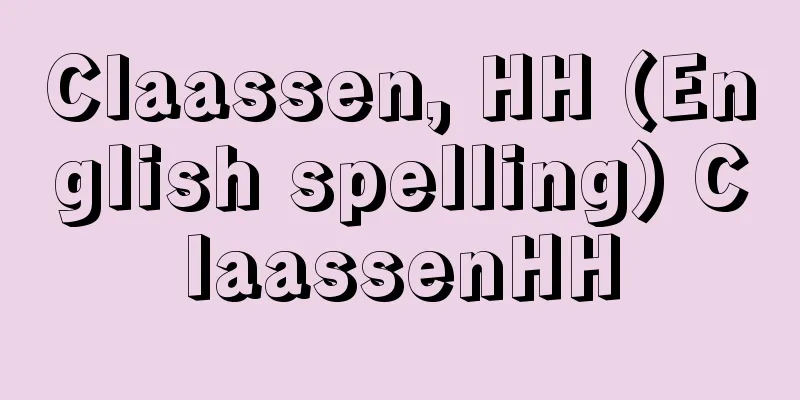Achromatic lens - Iro-keshi lens (English spelling)

|
A combination lens with chromatic aberration correction. The conditions that must be met between the lens material, the radius of curvature of the refracting surface, the lens arrangement, etc. to correct chromatic aberration are called achromatic conditions. It is very difficult to completely achromatize all colors, but the purpose can be almost achieved by achromatizing two or three appropriate light within the wavelength range used. A lens that corrects chromatic aberration for two colors is called an achromat, and a lens that highly corrects for three or more colors, including other aberrations, is called an apochromat. Lenses for the naked eye are achromatized for the red C-line and blue F-line, and spherical aberration is corrected for the orange D-line. To achromatize two colors, two lenses of the same material with focal lengths of 1 and f2 are placed at a distance d = ( f1 + f2 )/2. Furthermore, the achromatic condition for a lens system consisting of a convex lens and a concave lens made of different materials in close contact is Δn 1 / r 1 - Δn 2 / r 2 = ( Δn 1 - Δn 2 ) / r, where r 1 , r 2 and r are the spherical radii of both the left and right faces and the contact surface, and Δn 1 and Δn 2 are the differences in the refractive indices of both materials for the two wavelengths. Usually, a convex lens made of crown glass is combined with a concave lens made of flint glass. Precision achromatic lenses use three or more pieces of glass made of special materials. Source: Encyclopaedia Britannica Concise Encyclopedia About Encyclopaedia Britannica Concise Encyclopedia Information |
|
色収差を補正した組合せレンズ。色収差を補正するために,レンズの材質,屈折面の曲率半径,レンズの配置などの間で満たされるべき条件を色消し条件という。すべての色に対して完全に色消しするのは非常に困難であるが,使用する波長範囲内の適当な2つか3つの光に対して色消しすれば,ほぼ目的が達せられる。色収差を2色に対し補正したものをアクロマート,3色以上に対し他の収差も含めて高い補正をしたものをアポクロマートという。肉眼用レンズでは赤色のC 線と青色のF 線に対し色消しを,オレンジ色のD 線に対し球面収差の補正をする。2色に対し色消しするには,焦点距離 1,f2 の同じ材質の2枚のレンズを間隔 d=(f1+f2)/2 で置く。また,材質が違う凸レンズと凹レンズを密着させたレンズ系による色消し条件は,左右両面および密着面の球面半径を r1,r2 および r ,両材質の2つの波長に対する屈折率の差を Δn1,Δn2 とすると,Δn1/r1-Δn2/r2=(Δn1-Δn2)/r である。普通はクラウンガラスの凸レンズとフリントガラスの凹レンズとを組合せる。精密な色消しレンズでは,3枚以上の特殊な材質のガラスを用いる。
出典 ブリタニカ国際大百科事典 小項目事典ブリタニカ国際大百科事典 小項目事典について 情報 |
Recommend
AIKS - AIKS
…Official name: IndiaBharat∥IndiaArea: 3,287,263 ...
Tilburg - Tilburg (English spelling)
A city in the central part of the province of Noo...
Kim Ch'ǒnt'aek (English name)
A sijo (traditional Korean poem) writer and poet o...
"Kineya genealogy" - Kineya Keifu
...However, in the next Wakashu Kabuki (banned in...
Chatham [Islands] - Chatham
A group of islands in the South Pacific Ocean abou...
Alisma plantago-aquatica var. orientale (English spelling) Alisma plantago aquatica var orientale
…[Takashi Yamashita] [Aya Nitta]. … *Some of the ...
Guanche people - Guanche people (English spelling)
The indigenous people of the western part of the C...
Montevideo (English spelling)
The capital of Uruguay. It is the capital of Monte...
Printing method - injisokkihoshiki
...The semi-cursive school is a compromise betwee...
Lux, H. (English spelling) LuxH
...In other words, the above reaction between the...
Stamp - Oinin
〘 noun 〙 To stamp something. Stamping . Originally...
Japanese vine - Japanese vine
...It is distributed in Honshu, Shikoku, Kyushu, ...
Nigeria - Naijeria (English spelling)
A country in eastern West Africa. Its official na...
Goshiki [town] - Goshiki
An old town on the west coast of central Awaji Isl...
Fuji no Makigari - Fuji no Makigari
Minamoto no Yoritomo held a large-scale hunting pa...




![Kanaya [town] - Kanaya](/upload/images/67cb3aa91978b.webp)




